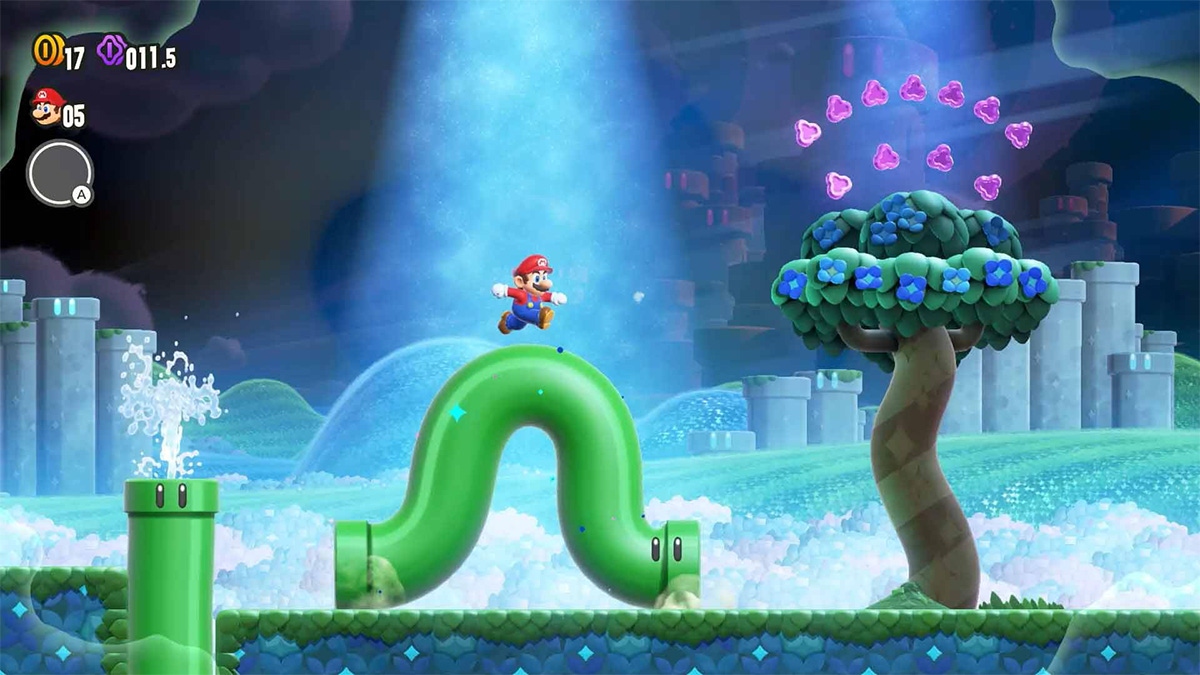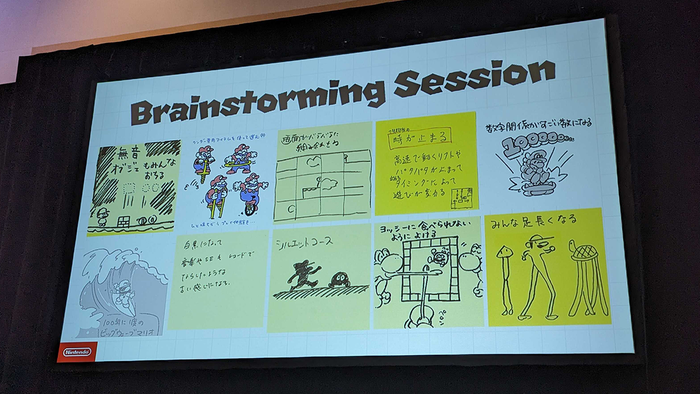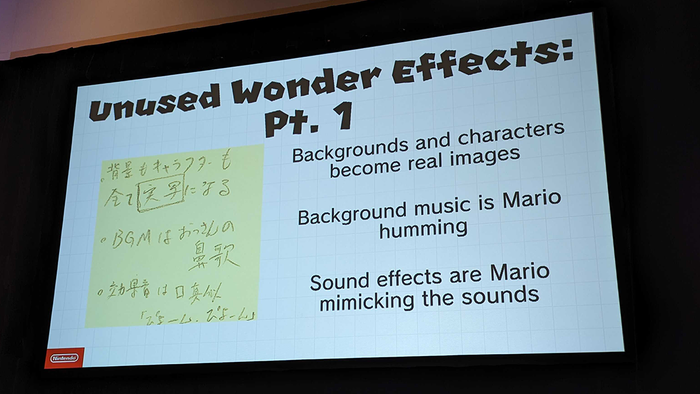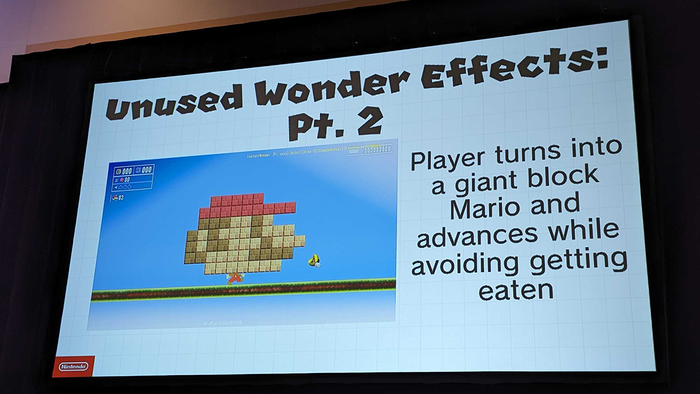Trending
Opinion: How will Project 2025 impact game developers?
The Heritage Foundation's manifesto for the possible next administration could do great harm to many, including large portions of the game development community.

Read More from GDC 2024 | Keep up with the latest game industry event coverage from GDC 2024, including news, talks, interviews, and more from the Game Developer team.
Nintendo doesn't believe in bad ideas.

There's a phrase in Japan known as "Mottainai." Broadly, it conveys a profound sense of regret over wastage, and in English might best translate to "waste not, want not."
During GDC 2024, Super Mario Bros. Wonder producer Takashi Tezuka and director Shiro Mouri explained how the mantra influenced development of the 2D platformer by pushing the team to adapt and reshape ideas rather than cast them aside.
Wonder attempts to eschew franchise convention via the introduction of Wonder Flower power-ups that are entirely unpredictable, sometimes transforming the environment itself or turning inanimate objects (such as the iconic pipe) into sentient beings.
During production, the entire development team were asked to submit ideas for new power-ups, resulting in over 2,000 sticky note suggestions. Everybody, including many staffers in their first year at the company, were asked to pitch effects that players hadn't encountered before in a Super Mario Bros. title. It was also imperative their ideas could be encapsulated with a single phrase.
Tezuka and Mouri asked for the weird and wonderful and (as the post-its below show) that's exactly what they got. For example, one employee simple wrote "A Wonder Quiz Starts" on a sticky note. Yet, they both agree that even the most outlandish ideas have value.

Sound director Koji Kondo pitched another idea that would have seen a live action version of Mario with "human proportions" appear. He would then progress through the stage while humming the background music and mimicking the various sound effects himself.
"As an idea, it's very funny," says Mouri. "But it's hard to see the connection between 'pre-Wonder Effect' and 'during Wonder Effect. It's also hard to imagine the game changing much by having Mario turn into a live-action human proportion version of himself."

Mouri explains there were a lot of ideas like this that didn't quite meet the criteria of what was considered a viable Wonder Effect, but that didn't mean they lacked value.
"While we couldn't use Mr Kondo's idea as a Wonder Effect, we thought it could instead be used as a badge, which is a system that lets players select their own special powers. It was such an interesting idea, it would have been 'Mottainai' to not use it."
Highlighting another example of a rejected Wonder Effect, Mouri explained that someone wanted to transform players into a "gigantic block Mario" that had to survive an entire course without being devoured by block-munching enemies called Gnawshers.

The team rolled a hilarious and unfathomably horrifying clip of a prototype that saw a blocky version of Mario devoured before our eyes. The audience laughed, but one can only assume the audible mirth masked their internal screams.
"We felt like it had a very strong and interesting visual appeal so we tried prototyping it," explains Mouri. "But it was ultimately not adopted as a Wonder Effect. This is because the area of the blocks was large, and it was impossible to develop a strategy of how to avoid enemies. So it just turned into a game of making a mad dash to the end. However, reducing the area of blocks would have resulted in losing that visual appeal, so we decided to not use it."
Although this particular effect didn't make the cut, it wasn't a case of Mottainai because the team had fun cobbling together the prototype. There's emotional value, says Mouri, in encouraging colleagues across the entire team to experiment with carefree abandon. Development, like video games themselves, should be a thrilling, joyful adventure into the unknown.
"We weren't planning on including Wonder Effects at the beginning. Rather, they were created by considering and solving issues faced by 2D Mario games. At first, there were no rules as to what constituted a good Wonder Effect versus a not-so-good Wonder Effect," he says.
"Nobody knows what the new elements are going to be at the beginning of development. I believe the answer to this question is uncovered together as a team. What makes development of a game like this so fun is the fact that we're creating something that nobody holds the answer to."
You can find our full slate of GDC 2024 coverage, including in-depth interviews and talk write-ups, by clicking right here.
Game Developer and Game Developers Conference are sibling organizations under Informa Tech.
You May Also Like